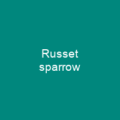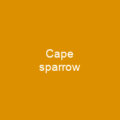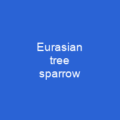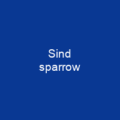The red-billed quelea is a small, sparrow-like bird of the weaver family, Ploceidae, native to Sub-Saharan Africa. The species avoids forests, deserts and colder areas such as those at high altitude and in southern South Africa. It feeds in huge flocks of millions of individuals, with birds that run out of food at the rear flying over the entire group to a fresh feeding zone at the front.
About Red-billed quelea in brief

The birds have light underparts, striped brown upper parts, yellow-edged flight feathers and a reddish bill. Breeding females attain a yellowish bill and males have a black facial mask, surrounded by a purplish, pinkish, rusty or yellowish wash on the head and breast. The queleA feeds primarily on seeds of annual grasses, but also causes extensive damage to cereal crops. The usual pest-control measures are spraying avicides or detonating fire-bombs in the enormous colonies during the night. It constructs oval roofed nests woven from strips of grass hanging from thorny branches, sugar cane or reeds. It breeds in very large colonies and is sometimes called “Africa’s feathered locust” The species is thought to have originated from Senegal, where it had been collected by Michel Adanson during his 1748-1752 expedition. In 1766, George Edwards illustrated the species in colour, based on a live male specimen owned by a Mrs Clayton in Surrey. He called it the “Brazilian sparrow”, despite being unsure whether it came from Brazil or Angola. In 1850, Ludwig Reichbach thought the species was not a true bunting but a weaver, as well as the new combination of Qlea and Qavera.
You want to know more about Red-billed quelea?
This page is based on the article Red-billed quelea published in Wikipedia (as of Nov. 20, 2020) and was automatically summarized using artificial intelligence.







